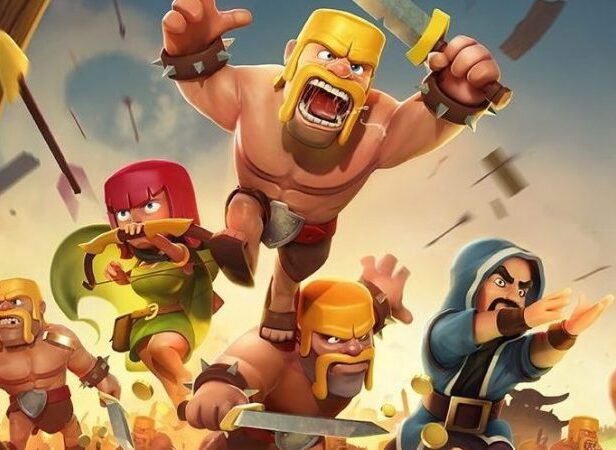Resources > All
Insights and tips about the games industry
Subscribe for gaming insights, industry reports and product updates delivered straight to your inbox.
#Game Design
11 Tips to Speed Up your Game Design Process
At the start of a project, everything has yet to be done. There are loads of tasks at hand, and it is hard to tackle them in the right order. As a game designer, our job involves some writing. Often a lot of writing. The large, almighty Game Design Document is a myth. I am talking here of a hypothetical file that would contain every bit of information there is to know about a game. For larger teams, they are too many elements to record and keep track of to have them all compiled in a single document. And sections of a GDD are relevant but to a small portion of the development team. Documents are less than ideal when it comes to assembling coherent networks of information. But we still have to write a lot in the pre-production phase of a game....
#Ads & Monetization
Cracking the IAP Code: The F2P secret devs don’t want to talk about
Welcome to the magical world of mobile, where the clever boys and girls at the world’s most creative, ingenious studios have fathomed a way to make millions of dollars from games they don’t even charge a penny for consumers to download. The industry has been revolutionised, all of its problems have been solved, and Apple’s gated community ensures every developer gets an equal share of the ever-expanding pie. Or perhaps not. It’s been especially easy for the mobile press to get wrapped up in the huge successes the industry has fostered since the App Store first launched in 2008, with the rise of free-to-play a couple of years later ensuring companies few people had heard of quickly become household names. That’s been the irony that’s not been lost on many of the developers attempting to earn a living on iOS....
#Game Design
How to expand your audience with Game Accessibility
We make games for others to enjoy. We want to reach the largest amounts of players possible within our target group. There are many decisions we can take in our design process to improve the feel of our game. We can invest time on the core mechanics, the aesthetics, and the sound design. All that is of great importance. We want our games to keep the players in a mental state of flow as much as possible. Our games should try their best to keep the player immersed in its world. In other words, our role as designers is to provide a good user experience. That is the field of UX design. It is all about making our creations usable, enjoyable and accessible. Those 3 components of UX design are deeply linked to one another. Your game will hardly be pleasant if its UI is...
#Ads & Monetization
Why there’s no shame in indies making money
There was a telling moment in the UK games development scene recently. A couple of years ago, the British Government lifted the lid on Games Tax Relief – a system designed to allow developers to claim back some game production costs, providing the game in question was identified as “culturally British”. After the initial rush of enthusiasm and jubilation, developers then – in a typically British manner – started to get suspicious. Was this a cynical ploy to get more bright red post boxes, Beefeaters and British bulldogs in games? How could anyone deem whether a game was culturally British or not? How would you go about claiming? Would the amount of money you’d be able to access be worth all the perceived effort it would take to get it? Was it all just a big trick? Of course, as...
#Game Design
Exploring Games from the Creator’s Perspective
There are a few ways we can go about improving our understanding of game design. We can read books, articles, watch talks… We can also analyze games! In this article, I want to explore with you an efficient analysis process, for learning purposes. It is about exploring games with a creator’s eye. For scholars or game analysts, a better source of information on game research would be the website Game Studies. When I study a game or one of its components, my goal is to better understand how it works. I want to know how it was built and why it was made that way. In other word, I’m looking to get a sense of the intention of its authors. A secondary objective is to sharpen my observation skills, to practice critical thinking. The goal of an analysis is not...
#Data & Analytics
Everything You Need to Know About Interpreting KPIs
There are 12,000 games released on the US apple store each month. More than 400 each day on a single platform. Although they are of varying quality, the concurrence is fierce and it is hard to get visibility. More important even, is the fact that as a team, we want to rely on luck as little as possible: the risk isn’t only on our shoulders, but also on our teammates’. As a business, we have some objective tools at our disposal to see where we are going. We can estimate the risk our work represents, and the precise objectives we have to reach in order to survive as a game company. Those tools are collectively called Key Performance Indicators, or KPIs. What are key performance indicators? KPIs are metrics that are used to measure the performance of your games, your...
#Marketing & Publishing
Why now’s the time to get to know your players
Marketing is a dirty word within the walls of many independent developers. Even for those who acknowledge it’s something they should be doing, it’s still often a task tackled right at the last minute – a reluctant last tick on a checklist. As with any job handled in a half hearted manner, however, it often doesn’t deliver the results developers are expecting. Or, indeed, any results at all. Much of this is down to the fact that, even amongst industry veterans, marketing is a misunderstood art. So often deduced to be little more than “promotion” (even by some who actually work in the field), marketing is actually something successful firms working in any field being to take on before their product even exists. What sticks in the mind for me is a lecture I was party to when studying at...
#Live Ops
Why it’s important to keep your initial players happy
In our last data science report on what makes a game successful we looked at the evolution of key game metrics over 90 days after launch, across 400+ games. (If you haven’t read that already, we definitely think you should before going forward with this one.) One of our findings was that most successful games show a better handling of their initial installs, dubbed the Golden Cohort. We thought it would be an interesting venture to dig a bit deeper into this. And so the queries began. Methodology Sample description We look at players from 208 games that hit 1000 installs during 2014. They represent the games that on a cumulative revenue basis are in between the 50th and the 90th percentile. This ensures we analyse the most successful games in terms of revenue in our network (games that pertain...
#Live Ops
Why Habit Formation Is The Key To Long Term Retention
Forenote: The goal of this article is to give you pointers about how habits work, beyond good and evil. It tries to depict some unconscious habit-related mechanisms that come into play in our games. Only that way can we get a better grasp of how we function from a psychological standpoint – and take design decisions in consequence, aware of the consequences of our choices. “We are what we repeatedly do”, said Aristotle. In other words, we human beings are shaped by our habits. Each and every one of us has hundreds of habits. Be it heading to the kitchen as soon as we wake up to make some coffee… or logging onto our preferred MMO to tackle our dailies before work. As you know, habits are mechanical. A player who gets used to playing your game well will most likely keep coming back to it. A player who gets used...
#Marketing & Publishing
16 Reasons Why Players Are Leaving Your Game
Players leave games. According to Marc Robinson’s 2013 GDC talk, “On average, less than 40% of players return to a free-to-play game after just one session.” [bctt tweet=”On average, less than 40% of players return to a free-to-play game after just one session!”] And as you know, our first duty as professional game designers is to create compelling experiences. We make games for the players to enjoy and play! If they leave our games too fast and too often, we have failed. Thinking of the reasons why players are leaving your game is a great opportunity to put yourself in their shoes. Not only that, your financial success largely depends on the size and fidelity of your audience. In particular if you are monetizing your game with in-app purchases. The data science team here at GameAnalytics recently unveiled the results...
#Game Design
Squeezing more juice out of your game design!
So you’ve made a great core game. The mechanics are rock solid, the first time user flow feels great and people can understand how to play, but somehow your game doesn’t feel quite right. Since gamers first began interacting with controllers, designers have struggled to make experiences feel better, this adaptation of your games feel is often referred to as a game’s juiciness. What is juicing all about? Game Juice is a pretty wide yet specific concept. As the term suggests, juicing is about taking a game that works and adding layers of satisfaction to improve game feel. Satisfaction is created by the senses, every visual and auditory input has the ability to make something that is virtual work in a way that is more believable. It’s not the art of realism, but more the art of illusion that leads a...
#Game Design
How To Create Immersive Game Intros
Your game’s intro can make or break its retention. Nathan Lovato offers tips on how to get your players through the intro and make sure they stay long enough to get a taste of the best your game has to offer.
#Data & Analytics
What Analysing 400+ Games Has Taught Us
Each year brings with it a set of new fads in gaming, some make it, some falter, but one question is ever present: what makes a game successful? In an attempt to answer this, we looked at the evolution of key game metrics over 90 days after launch, across 415 games released in 2014 and spreading across multiple genres and platforms.
#Editor's pick
Game data pipeline: Building vs buying
As a large number of studios, publishers, and game developers are heavily relying on data to guide their decisions, they need to decide between building or buying. But which one is more efficient? To assist you in understanding the Total Cost of Ownership (TCO), we broke down the following key considerations: Setup requirements Cost calculation Team needs and recruitment
#Editor's pick
Mobile gaming benchmarks for Q1 2024
Uncover the industry’s performance with Q1 2024 benchmarks. Explore key metrics like retention rates and session engagement to benchmark your games against industry standards. What’s inside? Retention benchmarks for casual, classic, and mid-core games Session length benchmarks for games launched in North America, Europe, the Middle East, and Asia Session count benchmarks across 15 game genres
#Editor's pick
Grow your revenue with Xsolla Web Shop for Mobile Games
“Xsolla anticipated this seismic shift earlier this year, when we launched multiple products that are being actively used by some of the world’s largest game companies to increase profit and build closer relationships with their mobile and pc players. We’ve now combined these products and learnings into an elegant new solution called Xsolla Web Shop for Mobile Games,” said Chris Hewish, President of Xsolla. Through Xsolla Web Shop for Mobile Games, developers can expect significant revenue growth and can reach new players in new geographies previously unavailable to them. This solution solves many challenges developers face; such as discoverability, declining profit margins, lack of control over the user experience, access to localized payment methods, cross game marketing, more efficient user acquisition, effective collaboration with creators and influencers, and much more. Three industry-changing announcements make this opportunity more timely than ever:...
#Editor's pick
2023 Roblox report: Behind the data with GameAnalytics
Download a comprehensive report of Roblox player behavior and game performance based on GameAnalytics data from 2023. This report highlights critical benchmarks and insights to help Roblox creators optimize their games. What’s inside? Devices analysis Players’ daily session frequency Average revenue spent per user Session length and count benchmarks Retention benchmarks Revenue benchmarks
#Editor's pick
The Game Developer’s Handbook to Mastering Data Solutions
Data is the key to success in the ever-evolving landscape of game development. Explore this guide to transform your data into insights using our turn-key data solutions. What’s inside? Our comprehensive guide explores cost-saving strategies and real-world applications for advanced use cases. Learn how to seamlessly integrate data sources, unlock detailed player insights with Player Warehouse, access real-time data with Raw Export, and ensure data privacy compliance.
#Case study
Developing a #1 VR MMO: Ramen VR’s Journey with GameAnalytics
Discover how Ramen VR used data-driven game development to launch "Zenith: The Last City", which became the #1 bestselling game all major VR platforms—including Meta Quest/Rift, Steam and PlayStation VR.
#Editor's pick
Using AI to Supercharge Your Game Art Design
Discover how tweaking AI tool settings can help you generate varied art styles, produce better concepts, and speed up the process from prototype to final design. With AI on your team, creating unique game art has never been easier or faster.
#Editor's pick
Event Design & Tracking Guide for GameAnalytics
Learn how to create an adaptable tracking plan, enabling you to unlock richer insights and maximize the value of your data within GameAnalytics.
#Editor's pick
How studios use DataSuite to find hit games
Learn how successful publishers evaluate hundreds of games per month, to find the next hit game.
#Editor's pick
Among Us VR dev talks about how to create immersive worlds
VR is all about immersion. It’s about allowing players to lose themselves in more than just a game, but a new world. You have to build VR experiences the right way to make this happen. This goal is always top-of-mind for Schell Games. In this interview, we spoke to Schell Games’ Vice President of Product, Charlie Amis, to learn their story. “For VR, you want to make the player feel like they’re actually in the world you’ve created. This isn’t as true or a high priority in PC and console games. If people start to lose that sense of presence and immersion, then a lot of the reason they put the headset on is hurt. They want to go to another world or be someone new. So you need to help them feel like they’re really there and really that...
#Editor's pick
GameAnalytics H1 Update: New Product Improvements!
It’s been a busy time since February, when the largest update in GameAnalytics history was launched. Read on for more information about what’s changed recently, and new functionality coming to the platform very soon.
#Case study
How TapNation uses DataSuite to increase the LTV of 19 hit games by 50% in only 6 months
Smashing obstacles with Giant Rush While they’ve seen huge improvements using DataSuite across their portfolio, one game stands out in particular: Giant Rush. (And not just because the character is huge.) The title has now reached over 140 million downloads. And, through a series of A/B tests and insights from the data they collected, they’ve been able to increase the LTV by a whopping 200% over six months for this specific title. “It’s because we A/B test every day,” Philippe Grazina from TapNation says. “We ask questions like: When are players leaving the game? For example, the boss in Giant Rush. If we spot that they’re leaving at the same point every time, we know we need to make a change. Small details like that really help.” Through these granular insights, TapNation can iterate and improve on their game step...
#Editor's pick
How to Build a Data Warehouse for Games from Scratch
Over our last couple of blogs around data warehouses, we’ve explained how they let you analyze data from across your portfolio and look at what insights you can gather from them. Now, we’ll dive into how to build a data warehouse. What steps do you need to take and what resources will you need? To figure this out, we’ve rounded up the costs, steps, and tools we think you’ll need to get started. Please note, that we haven’t included the cost of running an engineering department (which you’ll need), which can end up being a lot of $$$. What do I need to get started? Before you start, you’ll need to ensure you have the right people. You’ll likely need a software or data engineer, and perhaps an architect or DevOps engineer. You’ll also need to budget for tools like...


























